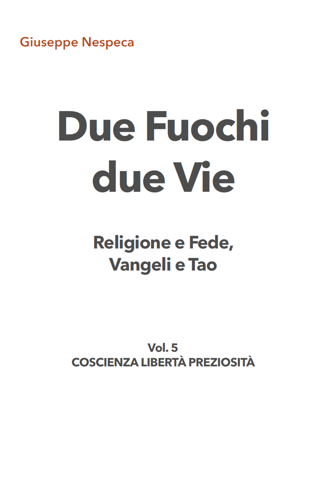1. When we speak of the dignity and mission of women according to the doctrine and spirit of the Church, we must look to the Gospel, which is the light by which Christians see, evaluate and judge everything.
In the previous catechesis, we saw how Revelation helps us to understand the identity and destiny of women, using the Virgin Mary as an example, according to what the Gospel says. But in that same divine source we find other signs of Christ's will regarding women. He speaks of them with respect and kindness, showing in his attitude a willingness to welcome women and to call upon them to commit themselves to the establishment of the Kingdom of God in the world.
2. We can recall first of all the numerous cases of women being healed (cf. John Paul II, Mulieris dignitatem, 13). And those in which Jesus shows his heart as Saviour, full of tenderness when he encounters those who suffer, both men and women. "Do not weep!" he says to the widow of Nain (Lk 7:13). And then he restores her son, risen from the dead. This episode gives us some insight into Jesus' intimate feelings towards his mother, Mary, in the dramatic perspective of participating in his Passion and Death. Jesus also speaks tenderly to Jairus' dead daughter: "Little girl, I say to you, get up!" And, after raising her from the dead, he orders "give her something to eat" (Mk 5:41, 43). Again, he shows his sympathy for the bent woman, whom he heals: and in this case, with the allusion to Satan, he also makes us think of the spiritual salvation he brings to that woman (cf. Lk 13:10-17).
3. In other parts of the Gospel we find Jesus' admiration for the faith of certain women expressed. For example, in the case of the woman with the haemorrhage: "Your faith has saved you," he tells her (Mk 5:34). This praise is all the more valuable because the woman had been subject to segregation imposed by ancient law. Jesus also frees the woman from this social oppression. In turn, the Canaanite woman receives recognition from Jesus: "Woman, your faith is great" (Mt 15:28). It is a compliment that has special significance, considering that it was addressed to a foreigner in the world of Israel. We can also recall Jesus' admiration for the widow who offers her gift in the temple treasury (cf. Lk 21:1-4); and his appreciation for the service he receives from Mary of Bethany (cf. Mt 26:6-13; Mk 14:3-9; Jn 12:1-8), whose gesture, he announces, will be made known to the whole world.
4. Even in his parables, Jesus does not hesitate to use similes and examples drawn from the female world, unlike the midrash of the rabbis, where only male figures appear. Jesus refers to both women and men. If we wanted to make a comparison, we could perhaps say that the advantage lies with women. This means, at the very least, that Jesus avoids even the appearance of attributing inferiority to women.
Furthermore, Jesus opens the door to his Kingdom to women as well as to men. By opening it to women, he wants to open it to children. When he says, 'Let the children come to me' (Mark 10:14), he is reacting to the vigilance of the disciples who wanted to prevent women from presenting their children to the Master. It is as if he were agreeing with the women and their love for children!
In his ministry, Jesus is accompanied by many women who follow him and help him and the community of disciples (cf. Lk 8:1-3). This is a novelty compared to Jewish tradition. Jesus, who attracted these women to follow him, shows in this way how he overcame the prejudices prevalent in his environment, as in much of the ancient world, about the inferiority of women. His struggle against injustice and oppression also includes his rejection of discrimination between women and men in his Church (cf. John Paul II, Mulieris dignitatem, 13).
5. We cannot fail to add that the Gospel also shows Jesus' benevolence towards certain sinners, whom he asks to repent, but without railing against them for their mistakes, especially since these involve the co-responsibility of men. Some episodes are truly significant: the woman who goes to the house of the Pharisee Simon (cf. Lk 7:36-50) is not only forgiven her sins, but also praised for her love; the Samaritan woman becomes a messenger of the new faith (cf. Jn 4:7-37); the adulterous woman receives, together with forgiveness, the simple exhortation not to sin again (cf. Jn 8:3-11); (John Paul II, Mulieris dignitatem, 14). Without doubt, Jesus does not accept evil, sin, or anyone who commits it: but how much understanding he shows for human frailty and how much goodness he shows towards those who already suffer from their spiritual misery and, more or less consciously, seek the Saviour in him!
6. Finally, the Gospel says that Jesus expressly calls women to collaborate in his work of salvation. Not only does he allow them to follow him to help him and the community of disciples, but he also asks for other forms of personal commitment. Thus, he asks Martha to commit herself to faith (cf. Jn 11:26-27): and she, responding to the Master's invitation, makes her profession of faith before the resurrection of Lazarus. After the Resurrection, he entrusts to the pious women who had gone to the tomb and to Mary Magdalene the task of transmitting his message to the Apostles (cf. Mt 28:8-10; Jn 20:17-18): "The women were thus the first messengers of Christ's Resurrection to the Apostles themselves" (Cathechismus Catholicae Ecclesiae, 641). These are quite eloquent signs of his desire to involve women in the service of the Kingdom.
7. This behaviour of Jesus has its theological explanation in his intention to unify humanity. As St Paul says, he wanted to reconcile all people through his sacrifice, "in one body" and make them all "one new man" (Eph 2:15-16), so that now "there is no longer Jew or Greek, there is no longer slave or free, there is no longer male and female; for all of you are one in Christ Jesus" (Gal 3:28). And here is the conclusion of our catechesis: if Jesus Christ has united men and women in the equality of their status as children of God, He commits both to His mission, not by suppressing diversity at all, but by eliminating all unjust inequality and reconciling everyone in the unity of the Church.
8. The history of the early Christian communities tells us how much women helped to spread the Gospel: starting with "Phebe, our sister," as St. Paul calls her, "deaconess of the Church of Cenchreae: . . . she has helped many, including myself" (Rom 16:1-2). I would like to pay tribute to her memory and to that of the many other women who collaborated with the Apostles in Cenchreae, in Rome and in all the Christian communities. With them, we also remember and praise all the other women - religious and lay - who over the centuries have borne witness to the Gospel and transmitted the faith, greatly influencing the growth of a Christian climate in the family and in society.
[Pope John Paul II, General Audience, 6 July 1994]
Women

don Giuseppe Nespeca
Giuseppe Nespeca è architetto e sacerdote. Cultore della Sacra scrittura è autore della raccolta "Due Fuochi due Vie - Religione e Fede, Vangeli e Tao"; coautore del libro "Dialogo e Solstizio".
Email This email address is being protected from spambots. You need JavaScript enabled to view it.The ancient priest stagnates, and evaluates based on categories of possibilities; reluctant to the Spirit who moves situations
Il sacerdote antico ristagna, e valuta basando su categorie di possibilità; riluttante allo Spirito che smuove le situazioni
«Even through Joseph’s fears, God’s will, his history and his plan were at work. Joseph, then, teaches us that faith in God includes believing that he can work even through our fears, our frailties and our weaknesses. He also teaches us that amid the tempests of life, we must never be afraid to let the Lord steer our course. At times, we want to be in complete control, yet God always sees the bigger picture» (Patris Corde, n.2)
«Anche attraverso l’angustia di Giuseppe passa la volontà di Dio, la sua storia, il suo progetto. Giuseppe ci insegna così che avere fede in Dio comprende pure il credere che Egli può operare anche attraverso le nostre paure, le nostre fragilità, la nostra debolezza. E ci insegna che, in mezzo alle tempeste della vita, non dobbiamo temere di lasciare a Dio il timone della nostra barca. A volte noi vorremmo controllare tutto, ma Lui ha sempre uno sguardo più grande» (Patris Corde, n.2)
Man is the surname of God: the Lord in fact takes his name from each of us - whether we are saints or sinners - to make him our surname (Pope Francis). God's fidelity to the Promise is realized not only through men, but with them (Pope Benedict).
L’uomo è il cognome di Dio: il Signore infatti prende il nome da ognuno di noi — sia che siamo santi, sia che siamo peccatori — per farlo diventare il proprio cognome (Papa Francesco). La fedeltà di Dio alla Promessa si attua non soltanto mediante gli uomini, ma con loro (Papa Benedetto)
In the communities of Galilee and Syria the pagans quickly became a majority - elevated to the rank of sons. They did not submit to nerve-wracking processes, but spontaneously were recognizing the Lord
Nelle comunità di Galilea e Siria i pagani diventavano rapidamente maggioranza - elevati al rango di figli. Essi non si sottoponevano a trafile snervanti, ma spontaneamente riconoscevano il Signore
And thus we must see Christ again and ask Christ: “Is it you?” The Lord, in his own silent way, answers: “You see what I did, I did not start a bloody revolution, I did not change the world with force; but lit many I, which in the meantime form a pathway of light through the millenniums” (Pope Benedict)
E così dobbiamo di nuovo vedere Cristo e chiedere a Cristo: “Sei tu?”. Il Signore, nel modo silenzioso che gli è proprio, risponde: “Vedete cosa ho fatto io. Non ho fatto una rivoluzione cruenta, non ho cambiato con forza il mondo, ma ho acceso tante luci che formano, nel frattempo, una grande strada di luce nei millenni” (Papa Benedetto)
Experts in the Holy Scriptures believed that Elijah's return should anticipate and prepare for the advent of the Kingdom of God. Since the Lord was present, the first disciples wondered what the value of that teaching was. Among the people coming from Judaism the question arose about the value of ancient doctrines…
Gli esperti delle sacre Scritture ritenevano che il ritorno di Elia dovesse anticipare e preparare l’avvento del Regno di Dio. Poiché il Signore era presente, i primi discepoli si chiedevano quale fosse il valore di quell’insegnamento. Tra i provenienti dal giudaismo sorgeva il quesito circa il peso delle dottrine antiche...
Gospels make their way, advance and free, making us understand the enormous difference between any creed and the proposal of Jesus
duevie.art
don Giuseppe Nespeca
Tel. 333-1329741
Disclaimer
Questo blog non rappresenta una testata giornalistica in quanto viene aggiornato senza alcuna periodicità. Non può pertanto considerarsi un prodotto editoriale ai sensi della legge N°62 del 07/03/2001.
Le immagini sono tratte da internet, ma se il loro uso violasse diritti d'autore, lo si comunichi all'autore del blog che provvederà alla loro pronta rimozione.
L'autore dichiara di non essere responsabile dei commenti lasciati nei post. Eventuali commenti dei lettori, lesivi dell'immagine o dell'onorabilità di persone terze, il cui contenuto fosse ritenuto non idoneo alla pubblicazione verranno insindacabilmente rimossi.











